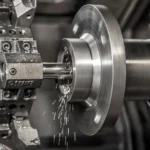The scalability, profitability, and quality of your textile printing will all be affected by the method you choose. The term “best printing method” is overused since there is no such thing. People who require textile sourcing require to know different printing methods so that they can choose suitable and not best. You’re in complete control of the result. In India, suppliers often settle for low-quality sourcing fabric since that is all that is readily accessible. Thanks to developments in technology, today’s printing presses are all superior in their own ways. This guide provides an overview of the available garment printing techniques along with an analysis of their relative merits and shortcomings. This user-friendly guide makes things much easier.
Factors to check before determining the printing method
- MOQ/Units
- Material
- The hue of the cloth and the intricacy of the pattern.
- Printing quality and longevity Size of the print
- Typical Processing Time.
Screen printing method
In screen printing, ink get force through a mesh onto the cloth below. After get clean, the product goes into a flash unit to dry. This technique uses thick inks, so the prints will last for a long time and look great.
Advantages of screen printing
- The inks used in screen printing are color-matchable to the Pantone color system.
- Inks and meshes of varying densities make the technique broadly applicable; hence, it may be used with a wide range of materials. However, cotton or polyester clothing is where you’ll most often see it employed.
- Using specialized inks, the method may create prints with effects such as glow-in-the-dark, ultraviolet light (UV), glitter, and textured surfaces.
Disadvantages of screen printing
- There must be a fresh pass and a new mesh for each color in the design. Therefore, the cost and lead time will be based on how complicated the design is.
- Design elements with subtle shading, tonal transitions, or other fine gradations are not suitable to this method.
- Due to the unique nature of each mesh in a given design, sample creation is currently impossible.
Direct To Garment (DTG) Printing
Direct-to-garment (DTG) printing is a modern method that uses inkjet printers to create photographic prints on textiles. The ink soaks into the fabric for a luxurious feel.
Custom T-shirts for business functions or other special occasions often have intricate designs and low minimum order numbers, thus production speed is of the essence.
Advantages of direct garment printing
- Printing pictures or designs with tonal transitions is ideal for this method, particularly when applied to white or light-colored T-Shirts.
- Since the setup is simple, rapid manufacturing of single units can get fulfill with relative ease.
- Production of samples is feasible.
Disadvantages of DTG
- When ordering DTG prints, it’s important to choose a reliable supplier with a high-quality printer. Otherwise, the end product would be uninspiring at best. Please be aware that exact Pantone color matches are not attainable with this print.
- The use of a white pass is essential when printing on top of a dark garment. If it is not done by a reliable manufacturer, it might have a major impact on the final product.
- Products with a high cotton content are the best candidates for this technique. Printing on synthetic materials is a relatively recent technological development.
Digital transfer printing
This technology employs a heat transfer process somewhat dissimilar to that of vinyl printing. In this case, however, instead of vinyl, the pattern is printed on specialized paper.
Putting slogans or logos on T-shirts, for example, that need a lot of colors and detail may require in small to medium-sized quantities using a process famous as direct-to-garment printing.
Pros of digital transfer printing
- You may utilize digital transfer printing on a wide range of textiles, from cotton and polyester to nylon and mixed fabrics.
- It’s a great method for printing long-lasting, high-quality photos.
- While exact Pantone color matching is out of the question, this approach will provide satisfactory results for even the most intricate designs.
- Samples or a limited run can get test using this method before a successful design get transfer to screen printing for mass production.
- Digital transfer printing has several advantages, but its logistical benefits are especially noteworthy. Usually, when sending products overseas, producers will just include the printed sheets. This allows heat to be transferred at the point of use. Saving on delivery charges is a bonus.
Disadvantages of digital transfer printing
- The emblem/design is appliqued into the cloth and has a plasticky finish.
- Fabrics that easily melt in the dryer are not a good fit for this technique.
- The durability of digital transfer printed garments is inferior to that of screen printed garments.
Vinyl printing
This method, sometimes called “CAD-cut printing,” involves exporting a pattern from computer-aided design (CAD) software onto vinyl. After the vinyl is laser cut to the correct dimensions, it is heat transferred to the garment. Small-batch printing of basic, personalized graphics, such as jersey numbers on sports jerseys.
Advantages of vinyl printing
- Names and titles are perfect examples of the kinds of personalized designs that lend themselves well to vinyl printing.
- Crack-free, long-lasting prints may be made with this method.
- Production of samples is feasible.
Disadvantages of vinyl
- Large designs are not recommended for heat transfer because of the fabric’s decreased flexibility.
- Time-consuming compared to direct-to-garment (DTG) printing is usual for this method.
- Pantone (PMS) color matching is not feasible.
Dye sublimation
The heat transfer process is also applicable in this printing procedure. In this case, though, the ink melts into the cloth, creating a smooth surface. Polyester fabric with elaborate printing or graphics, like logowear.
Advantages of dye sublimation
- Dye sublimation is widely useful because technique allows you to print on both sides of a garment after it has already get sewing.
- The method yields long-lasting prints with almost limitless scope for creativity in terms of both pattern intricacy and color palette.
- Imprints will not fade or fracture.
- Samples or low-volume runs of full-color print designs may be made using this approach before ramping up production.
Disadvantages of dye sublimation
- Fabrics that aren’t entirely polyester are not ideal for this method.
- Depending on the fabric’s color, dye sublimation printing may not provide the best results.
- In all-over prints, the sections where the garment get fold, such the side seams and armholes, will not get cover.
Other printing method
Discharge printing method
Discharge printing is the only method that can change the color of a garment without altering its original hue. Rather, the garment’s natural color get dissolve in the design’s form when a water-based solvent ink soaks into the cloth there. This method is perfect for printing on dark colors like black, gray, or blue.
Tie and dye batik printing
Both of these strategies use sophisticated approaches to create one-of-a-kind patterns. To prevent printing from occurring in wrong spots, threads are apply in tie-dyeing. When creating a batik print, wax is useful to seal off any regions that won’t be get color.
Foil printing
In foil printing, laser-cut foil is transferred to the fabric by heat. Using this technique, you can make shining patterns that really stand out. Keep in mind, too, that printing on foil doesn’t hold up well over time.
Conclusion
It might be overwhelming to consider all of the possible options when deciding on the best production methods, materials, and suppliers for your garment. It is essential to have a comprehensive understanding of the industry as a whole in order to achieve the required outcomes, especially when moving from a small-unit to a mass-manufacturing approach.
Fabriclore, an e-commerce platform makes it easy and smooth for you. With us you can get your textile sourcing process without hurdles. You can choose fabric as per your choice and then our team would help you in deciding the printing patterns. We have multiple offers for ready to use textile that you can utilize for your collection.




